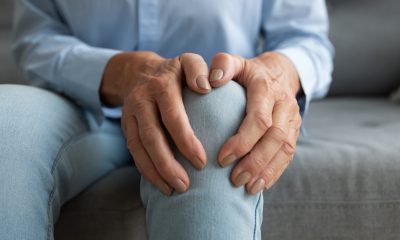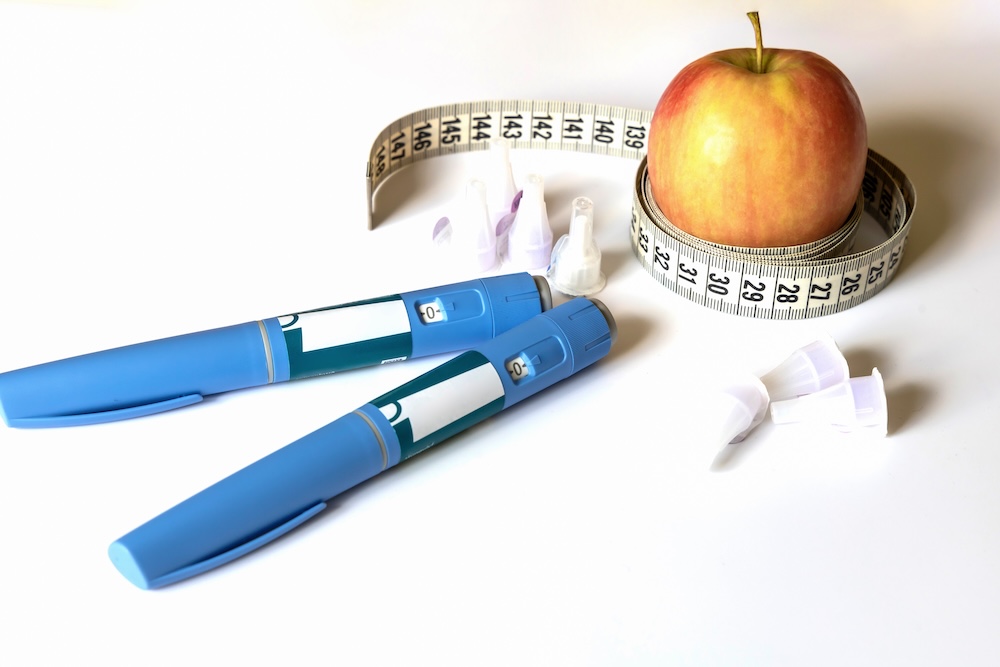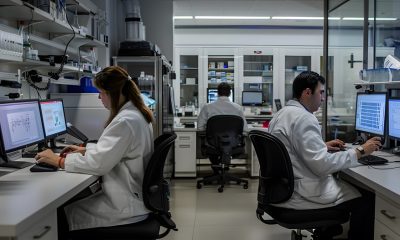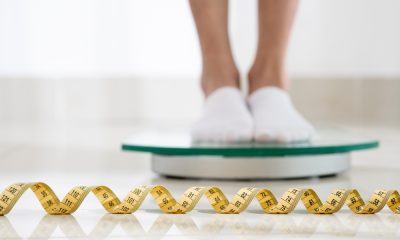News
Novel robotic pill can safely deliver injectable osteoporosis drug

An oral robotic pill could soon provide an alternative to painful injections in treating osteoporosis and other chronic diseases.
Teriparatide (PTH 1-34) has for decades been a proven and effective medication for rebuilding brittle bones characteristic of osteoporosis. But the drug, which was launched by Eli Lilly under the brand name Forteo, has to be taken by daily injection for up to two years.
However, a study presented at ENDO 2023 – the Endocrine Society’s annual meeting in Chicago in the US – suggests the medication could be safely and easily administered by a novel robotic pill.
Arvinder Dhalla, who leads clinical development at Rani Therapeutics, the San Jose, California-based company that has developed the technology and funded the study, said: “We believe this study provides the first clinical evidence of safe and successful delivery of the osteoporosis drug teriparatide through an oral robotic pill.
“Data from this study are very encouraging and should give hope to those suffering from chronic conditions that require painful injections, like osteoporosis, that an oral alternative could be on the way.”
When a person swallows the robotic pill, it moves through the stomach intact. In the intestine the pill releases a self-inflating balloon with a microsyringe, which injects a drug-filled microneedle and delivers the medication.
Dr Dhalla explained: “The intestines do not have pain response to needles, so the injection is painless.”

Rani’s robotic pill can navigate through the stomach and enter the small intestine where the capsule injects the drug into the intestinal wall. Image: Rani Therapeutics
The needle rapidly dissolves, and the medication is absorbed while the delivery mechanism deflates and is safely passed out of the body.
Dr Dhalla added: “The robotic pill, which is essentially a swallowable auto-injector in the form of a pill, is designed to deliver the drug safely and efficiently as a painless intestinal injection.
The Phase I study of 39 healthy women evaluated the safety, tolerability and movement through the body of the robotic pill, known as RT-102, containing a dose of teriparatide, which is a synthetic form of the natural human parathyroid hormone.
Study participants were divided into three groups. Two groups received either a lower or higher dose delivered with the robotic pill, and the third group were given a standard injection of teriparatide.
Fluoroscopic imaging was used to track the robotic pill through and out of the body. Drug concentrations were measured in blood samples collected over six hours.
The study found the bioavailability (the ability of the medication to be absorbed and used by the body) of the drug delivered by the robotic pill was comparable to or better than teriparatide given via the injection.
“This breakthrough technology of converting injections into oral pills is a significant step forward towards ending the burden of painful injections for millions of patients suffering from chronic diseases,” Dr Dhalla said.
Rani Therapeutics has indicated it hopes to begin a Phase 2 trial of RT-102 in patients with osteoporosis later this year.
The clinical-stage biotech company is also working on a new higher capacity version of the robotic pill which could be used to deliver larger molecules, such as monoclonal antibodies, which are laboratory-produced particles that act like human antibodies in the immune system.
Technology
Weight loss jabs my only temporarily reduce ‘food noise,’ study finds
News
Childhood loneliness linked to increased risk of dementia, study finds

Childhood loneliness increases the risk of dementia in later life, according to new research.
Adults who recalled being lonely and without a close friend in childhood faced a 41 per cent higher risk of developing dementia, even if they were no longer lonely as adults.
People who frequently felt lonely without close friends during youth showed accelerated cognitive decline — a worsening of memory and thinking — and started middle age with lower scores on these skills.
Researchers from universities in China, Australia and the US, including Harvard and Boston universities, analysed data from 13,592 Chinese adults tracked from June 2011 to December 2018.
The critical factor was the subjective feeling of loneliness itself. Those who reported often feeling lonely as children had a 51 per cent higher dementia risk, even if some had close friends.
However, those who only lacked close friends but did not feel lonely showed no significant difference in risk.
Nearly half of roughly 1,400 adults in the study reported being lonely and without close friends during childhood.
The 4.2 per cent who experienced both faced the highest risk of cognitive decline.
The link to dementia remained strong even for people who were no longer lonely in adulthood, suggesting early-life isolation can have lasting effects on brain health.
During childhood, the brain develops rapidly and is vulnerable to harm. Loneliness acts as a chronic stressor, flooding the developing brain with harmful hormones that can damage memory centres, and it reduces stimulation from social play and peer interaction that helps build robust neural networks.
A separate 2024 study of more than 10,000 older adults found that specific childhood hardships — including poverty, disruptive home environments or parental addiction — were directly linked to poorer cognitive function later in life.
Youth loneliness appears to be rising, partly linked to widespread social media use.
Among girls, 64 per cent aged five to seven, 67 per cent aged eight to 10, and 73 per cent aged 11 to 13 reported feelings of loneliness last year. More than a quarter of boys aged 11 to 17 in the US report feeling lonely.
Children face growing social isolation, with one in four Americans now eating every meal alone — a rate that has surged by over 50 per cent since 2003. Sharing meals with friends and family helps build bonds and positive memories in youth.
Fewer children are playing outside or joining team sports.
A recent study reported that one in three children do not play outside on school days, and one in five do not do so even at weekends.
The 2024 research found a direct, dose-dependent relationship between childhood adversity and cognitive problems in adults — the greater the early trauma, the greater the later risk.
For each significant increase in early trauma, individuals faced an eight per cent higher risk of daily memory issues and scored lower on objective tests of mental speed and focus.
News
Don’t miss you essential monthly agetech update

Your essential monthly update on agetech’s progress
Welcome to your monthly snapshot of the facts, figures, opinions, trends and challenges shaping the development of agetech.
Our new monthly tracker report aims to provide an concise update for busy agetech professionals on the many factors influencing your work.
Here you will find a concise breakdown of deals, developments and opportunities from the last 30 days; and insight and opinion from leading thinkers in the field.
We hope you find something useful and/or inspiring below – and welcome any feedback about what else you’d like to see included.

 Independence1 month ago
Independence1 month agoNew US$6.5m centre targets healthy ageing

 Wellness2 weeks ago
Wellness2 weeks agoJust 3,000 steps a day may slow Alzheimer’s progression, study finds

 News2 months ago
News2 months agoSimple test can predict risk of severe liver disease

 News4 weeks ago
News4 weeks agoWeight loss drug reduces heart attack and stroke risk regardless of weight loss

 News7 days ago
News7 days agoDiabetes expert launches ‘world-first’ music-based health learning platform

 News1 month ago
News1 month agoWeight loss jabs could make cancer scans less effective, study suggests

 News3 weeks ago
News3 weeks agoRound up: US$25m fund to reimagine human longevity

 News2 months ago
News2 months agoExercise may lower dementia risk, study suggests







































